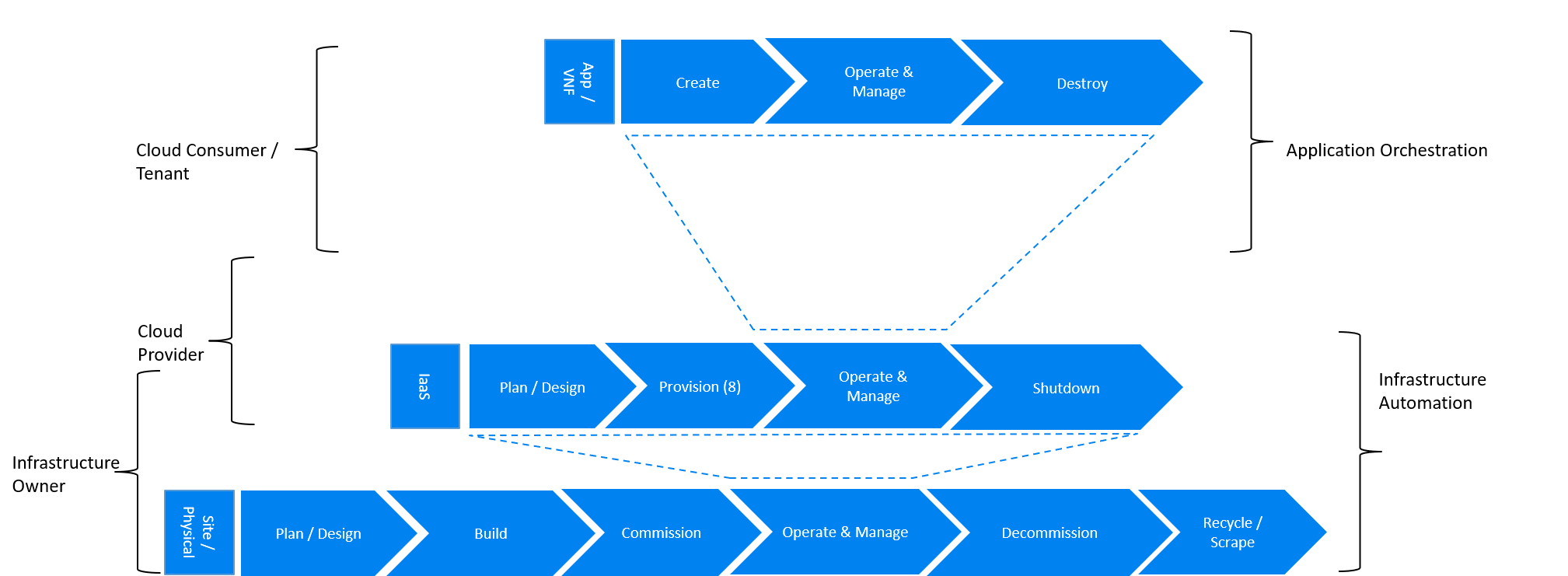...
In the CaaS on IaaS scenario, the Infrastructure Automation scope covers the Site/Physical layer, IaaS layer and CaaS layer. From the lifecycle perspective (the left hand side of the diagram), Site/Physical layer is entirely owned by the Infrastructure Owner, the virtualised infrastructure layer (IaaS) is shared between the Infrastructure Owner and the Cloud Provider. Similarly, the container orchestration layer (CaaS) is shared between the Cloud Provider and the Cloud Consumer / Tenant. These relationships can be illustrated by a situation, where a telecommunications provider owns the physical infrastructure on which an external cloud provider runs the virtualisation software (hypervisor). Sharing CaaS layer between the Cloud Provider and the Cloud Consumer reflects the fact that the container management/orchestration software like Kubernetes is lifecycled by the Cloud Provider (for instance when scaling out containers) but also by the Cloud Consumer because of the very close lifecycle relationship between an application and a container in this model, where for example destroying an application means also destroying related containers, and hence it can be considered as a part of application orchestration.
Fig 2. Infrastructure automation Automation in CaaS on BM scenario
The main and obvious difference in this scenario is lack of the IaaS layer, and hence the scope of the Infrastructure Automation is limited to only two layers: Site/Physical and CaaS. From the lifecycle ownership perspective, the CaaS layer is now shared not only between the Cloud Provider and the Cloud Consumer (for the same reasons as in the CaaS on IaaS scenario) but also with the Infrastructure Owner. The latter fact is related that in the bare metal deployments, because of the lack of the hypervisor, the CaaS layer is much more dependent on the underlying physical infrastructure.
Fig 3. Infrastructure Automation in IaaS scenario
In this "classical" scenario the scope of the Infrastructure Automation is defined by the Site/Physical and IaaS layers. From the lifecycle perspective the ownership of IaaS is shared between the Infrastructure Owner and the Cloud Provider. This scenario is characterised by a clear separation between the lifecycle (and hence the LCM Automation) of infrastructure and the application lifecycle automation owned by the Cloud Consumer / Tenant in the role of the Application Owner.
Essential foundation functional blocks for Infrastructure LCM automationAutomation:
- Representation Model
- Repository functions
- Available Software Versions and Dependencies
- Orchestration Engine
...

